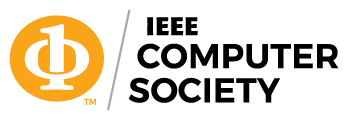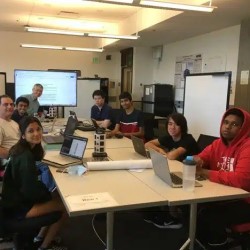Software Engineering Economics and Declining Budgets
Mastering Software Engineering: Navigate Complexity with Models and Methods.
In an era of declining budgets, software engineering organizations face increasing pressure to deliver high quality software products and services at lower costs. While the demand for new functionality continues to rise, budgets for developing and maintaining that software often remain stagnant or shrink. Software engineering economics offers guidance for making optimal decisions under these constrained circumstances.
The economic fundamentals of weighing costs, benefits, and risks apply regardless of budget size. However, smaller budgets require even more diligent application of economic principles. With less money to invest, the impact of suboptimal decisions multiplies. Resources wasted on low-value efforts cannot be reallocated to more beneficial uses later. Trade-offs between cost, schedule, scope and quality become more acute.
Software engineers must therefore consider economic factors thoroughly in requirements, architecture, design and other technical decisions. Economics-based techniques like return on investment analysis, business case formulation, total cost of ownership, and cost-benefit analysis grow even more valuable with limited funds. Estimation, prioritization, risk management and other established best practices also play crucial roles in maximizing the return on constrained software investments.
While software engineers may not control budget levels, they can apply software engineering economics to steer funds toward the highest-value initiatives. Even with declining budgets, economic principles guide the best use of available resources. The following sections explore software engineering economics concepts in more detail.
Read more about economics and budgets in the Software Engineer Book of Knowledge (SWEBOK)
What does a software engineering decision begin with?
A software engineering decision begins with a proposal – a single, specific course of action to be considered. For example, a proposal could be carrying out a particular software development project or not. Proposals represent binary units of choice that engineers either carry out or do not.
What is cash flow?
Cash flow describes the financial perspective of proposals. A cash flow instance is a specific amount of money flowing into or out of an organization at a specific time as a direct result of carrying out a proposal. A cash flow stream is the set of cash flow instances over time caused by a proposal. Analyzing cash flow streams helps determine which proposals are financially preferable.
What are intangible assets?
Intangible assets, also called knowledge assets, are any knowledge within an organization that affects its performance. Essentially, these are non-physical assets that have value. They include policies, processes, employee know-how and other institutional knowledge. Identifying intangible assets helps software engineers understand organizational realities that could influence a proposal’s success.
Why is understanding your organization's business model important?
A business model explains how an organization delivers value to customers while earning revenue. Understanding the business model provides context for how proposals could affect or be affected by organizational operations. This insight exposes hidden risks and opportunities influencing proposals.
Software engineering economics relies on fundamental concepts like proposals, cash flows, intangible assets and business models. Proposals frame binary choices faced by engineers. Analyzing resulting cash flows reveals financial impacts. Identifying intangible assets and business models provides organizational context. Together these concepts support optimal software decisions aligned with business goals, even when budgets tighten.
Decision-Making Process
What are two important steps you should start the process with? Two key early steps are defining the decision management strategy and identifying relevant stakeholders. For high-impact choices, the strategy could specify procedures, tools and responsibilities. Recognizing stakeholders brings needed expertise.
How do you discern the real problem? Thoroughly understanding the real problem is critical. Techniques like the “5 Whys” dig beneath superficial issues to root causes. Considering the broader organizational context exposes the real need. Framing the actual problem enhances solution quality.
Why is it important to identify all feasible solutions? The best solution must first become a candidate before being selected as best. Excluding the best choice dooms the decision making process. Creative thinking is essential to ensure the optimal approach is considered. More candidates increase the likelihood the ideal solution is among them.
Why should you select a preferred alternative? Multiple solutions often exist for software problems. Systematically evaluating alternatives against defined criteria leads to an optimal choice aligned with goals. Even flawed decisions can succeed with thorough analysis. Documenting the rationale also reinforces accountability.
Discerning the real problem, brainstorming all feasible solutions, evaluating alternatives and justifying the selection comprise the core of a sound decision process. This systematic methodology, properly applied, guides software engineers toward choices delivering the greatest value. While seemingly rigid, the framework adapts through iterating steps, recognizing intangibles and allowing fluid execution. Solid decisions and strong accountability result.
Read more about economics and budgets in the Software Engineer Book of Knowledge (SWEBOK)
What characterizes an intangible asset?
Intangible assets are knowledge within an organization that are not physical but still impact performance. This includes policies, procedures, employee know-how and institutional knowledge. Intangibles represent investments providing business value.
Why is it important to identify assets linked with your business goals?
Linking intangible assets to business goals shows how those assets serve as levers to achieve objectives. The assets with the strongest goal alignment likely offer the greatest value. Understanding these connections minimizes misalignment risk.
How can you discover software products that support your assets?
Once intangible assets are identified, related software products can be determined through stakeholder collaboration, listing known solutions, or iteratively analyzing individual assets. Products supporting high-value intangible assets deliver proportional business benefit.
What are the three important asset characterization cases?
Intangible assets are characterized by their quality and business impact. Assets with both indicators fall into four quadrants: Warning, Replaceable, Evolving or Stable. Assets with only a quality indicator are Acceptable or Unacceptable. Assets with only an impact indicator are also Acceptable or Unacceptable.
Intangible assets are the invisible knowledge powering organizational performance. Identifying these assets and measuring their quality and business impact reveals where software can drive the greatest gains. Characterizing assets exposes those requiring intervention versus those creating advantage. This knowledge guides software investments toward maximum benefit.
What are the practical business considerations?
Beyond theoretical concepts, real-world factors shape how software economics are applied. Business cases consolidate relevant information to evaluate investment merit. Multiple currencies may need converting to common values. Systems thinking provides a holistic context for software decisions. These practical elements support economically-sound choices.
Is it important to factor in multiple-currencies?
Yes, with cross-border finances, differing currencies must be converted to equivalent values before comparison. Historical exchange rates help project future conversions. Omitting currency normalization skews financial analyses.
What is systems thinking?
Systems thinking examines the full context surrounding a situation to gain a big-picture understanding. It identifies the many interrelated forces that combine to generate outcomes. This holistic perspective provides broader insight into software solutions.
How does systems thinking help a software engineer?
For a software engineer, systems thinking uncovers the complete ecosystem where software will exist. It reveals the diverse interacting elements software must integrate with. This comprehensive understanding exposes unseen implications that one-dimensional thinking misses. The engineer can then tailor solutions for maximal compatibility and value.
In practice, supplementary factors like business cases, currencies and systems perspectives supplement theoretical software economics. Business cases compile financial justification for investment choices. Currency conversions enable normalized financial comparisons. Systems thinking illuminates global contexts and interactions. Considered together, these practical elements strengthen the application of software economics in driving value.
Conclusion
Software engineering economics empowers organizations to maximize the business value delivered by software even as budgets shrink. Fundamental economic concepts like proposals, cash flows and intangible assets underpin systematic approaches for analyzing alternatives and optimizing decisions. Identifying intangible assets and their connections to business goals highlights where software can drive gains. Characterizing assets exposes those requiring intervention versus those creating advantage. Estimation, risk management and other proven practices further enhance software investments when resources are limited.
While software engineers may not control budgets, diligently applying economic principles equips them to guide spending toward high-payoff initiatives. Economics-based techniques directly align technical options with business objectives even under budgetary constraints. Tight resources demand even greater reliance on software economics to prioritize and justify projects delivering the greatest return. By incorporating economic considerations thoroughly into all decisions, software engineers can continue providing outstanding solutions despite limited means.
Read more about economics and budgets in the Software Engineer Book of Knowledge (SWEBOK)






